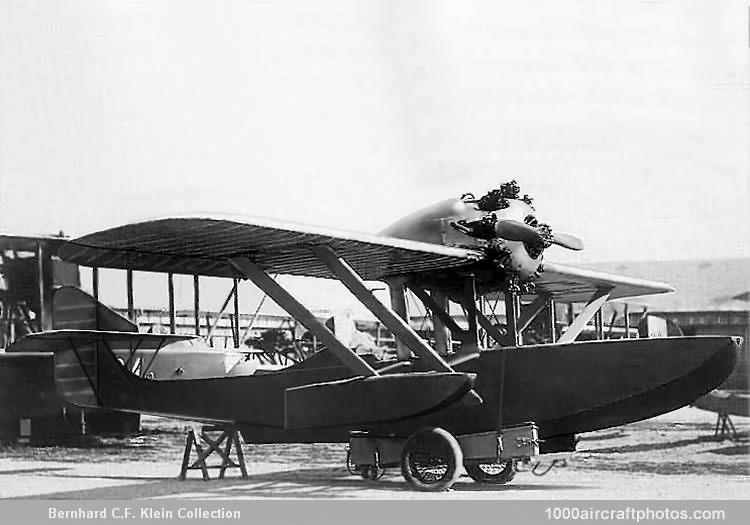The mainplane was a conventional two-spar structure in wood and was fabric covered, and it is believed that the leading edge was of formed plywood. It was carried above the hull on a pair of wooden wire-braced N-struts which also supported the engine. The outer panels of the mainplane were braced on each side by a pair of parallel struts attached at their lower ends to the hull sides. Square-section stabilizing floats were attached to the undersides of these struts, quite close to the hull, and each float had a pair of smaller wire-braced struts attached to the hull. The Jupiter engine was mounted in the front of an all-metal cowled nacelle, with its thrust-line above the mainplane, and drove a two-blade wooden propeller. The cylinders protruded through the cowling, and there was an oil-cooler below the nacelle between the N-struts. The pilot's cockpit was positioned well aft of these N-struts and was provided with a small windscreen and a head fairing.
Two C.1s were built by the Société Aéronautique Blanchard at Les Coteaux de St-Cloud during 1923, the first, registered F-ESEH, proved disappointingly slow, with a maximum speed of only 136 mph (219 kmh). It would have been flown in the Schneider race by Captain Teste, however, reportedly it was is held up by bad weather in the Channel, unable to reach Cowes, England in time for the start of the race on September 28, 1928, and was formally withdrawn. The second C.1 was not ready in time for the race, and was subsequently fitted with a more powerful Jupiter engine of 540 hp. Unfortunately, before it was registered, it was involved in a collision and written off. The first aircraft was scrapped in 1924.
(In the September 27, 1923 issue of the British magazine Flight, the aircraft was listed as Blanchard C.1, in recent sources it is also listed as Blanchard BB-1 and Blanchard-Blériot C.1)."
